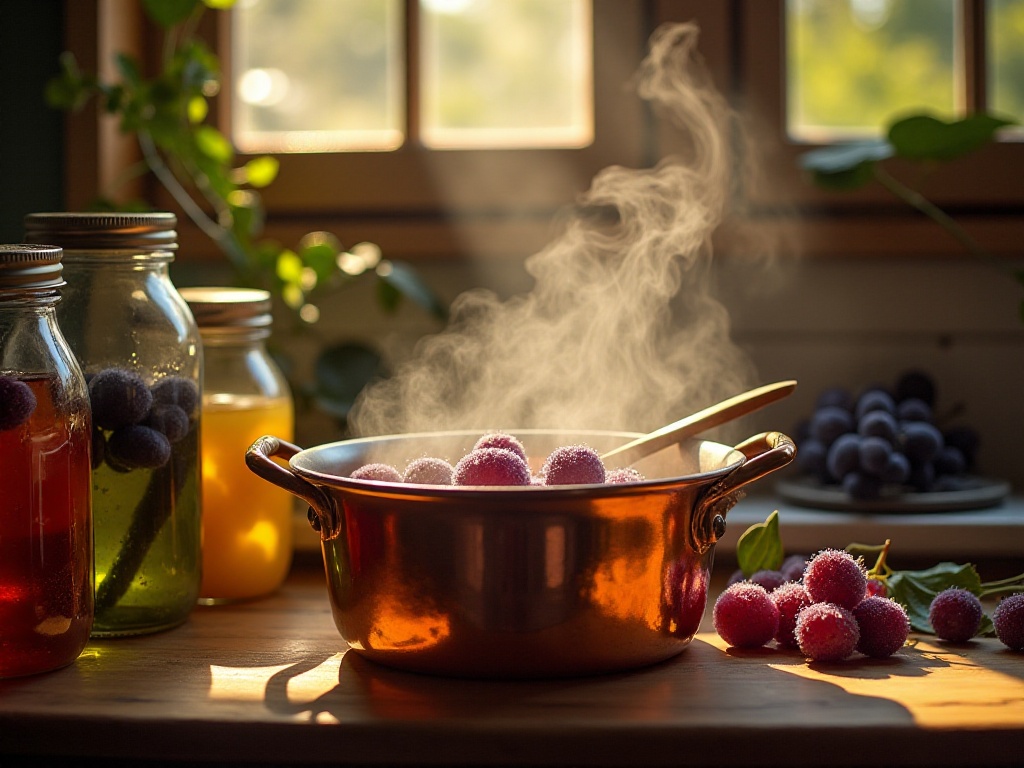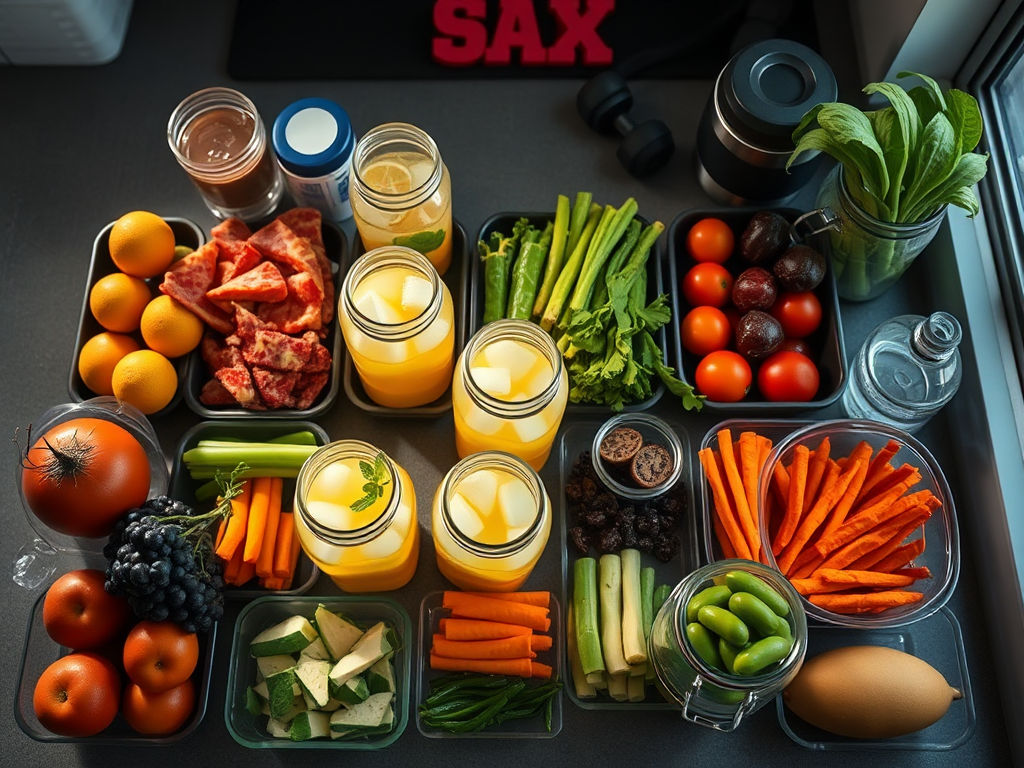Introduction
Hey everyone! During my years as a food blogger, I've figured out quite a few tricks for kitchen organization. When I first started living alone, my kitchen was an absolute disaster - I could spend ages just looking for soy sauce. After years of practice and improvements, my kitchen has finally taken shape, and today I'd like to share my experiences with you.
Clean as You Cook
To be honest, I used to be the type who wanted to run away when faced with kitchen chaos after cooking. Then one day, I saw my elderly neighbor cooking and noticed how she tidied up her cutting board and utensils while waiting for her soup to simmer. That was my lightbulb moment: so this is how kitchen cleaning could be done!
Since then, I've adopted this method. For instance, during the 15 minutes while waiting for rice to cook, I clean up the cutting board, knife, and leftover ingredients used earlier. While waiting for ingredients to soften while stir-frying, I put the seasonings back in their places. Gradually, I discovered this approach didn't add any extra burden but made the whole cooking process much smoother.
Sometimes, while waiting for ribs to become tender, I can even wash the dishes left from breakfast. This way, by the time the food is served, the kitchen remains clean and tidy. The best part is that I can enjoy my meal without worrying about post-meal cleanup, making everything much more relaxing.

Smart Categorization
The most headache-inducing aspect of kitchen organization was definitely managing seasonings. I used to place them randomly, making finding things like searching for a needle in a haystack. Later, I came up with a brilliant idea: organizing all seasonings by frequency of use.
Now, the most visible spots on my spice rack hold daily essentials like salt, light soy sauce, dark soy sauce, and oyster sauce. The middle section houses items like sesame oil, cooking wine, and white pepper powder - things I use often but not daily. Spices like five-spice powder, star anise, and cinnamon, which I only use occasionally, are all stored on the top shelf.
Beyond seasonings, I've also categorized my kitchen utensils. Everyday items like spatulas and strainers hang beside the stove, within arm's reach. Large appliances like rice cookers and soy milk makers are stored in lower cabinets, taken out only when needed. Items like dumpling rolling mats, which I only use once a year during Chinese New Year, are stored in the utility room.
This categorization system not only makes my kitchen look neater but also greatly improves efficiency in finding things. Previously, finding star anise might involve searching through three cabinets; now I just go straight to the top shelf. Plus, this system gives me a clearer picture of what I have and what I'm missing, preventing duplicate purchases or oversights while shopping.

Maximizing Space
When it comes to kitchen space, many people complain about having too little. However, the issue isn't about size but how to fully utilize every inch of space. My kitchen is only about six or seven square meters, but through some clever tricks, I've managed to fit all my kitchen tools and ingredients.
First is the use of cabinet doors. I've installed hooks and small storage racks on the inside of each cabinet door. Small utensils like spatulas and spoons hang there, making them very accessible. Some might worry about door closure, but it's not an issue if you choose hooks of appropriate height.
I particularly like utilizing corner spaces. For instance, I placed a rotating storage rack in the corner under the sink, making items easily accessible with a simple turn, eliminating the need to crawl on the ground searching. Wall corners are also often overlooked spaces - I installed a narrow floor-standing shelf there, perfect for storing less frequently used items.
The space behind doors is also a treasure. I hung a multi-layer storage bag on the back of the kitchen door, specifically for storing light items like food storage bags and cleaning cloths. This not only saves drawer space but also makes these items easily accessible.
What I'm most proud of is my countertop utilization. I specifically bought a cutting board with a storage rack, allowing me to store seasonings above while chopping. Next to the stove, I placed a multi-tier spice rack that doesn't take up much space while keeping seasonings visible.
Through these methods, I've at least doubled my kitchen's space utilization. Plus, because things are arranged more logically, finding items is more convenient, eliminating the previous need to search through everything.
Label Management
I'm quite forgetful and often can't remember when I bought things. It wasn't until I found bugs in an expired bag of flour that I realized the importance of label management.
Now, I label all storage containers. Not just with the contents' name, but also the purchase date and expiration date. This way, I no longer have to rely on luck to determine if ingredients are still usable.
For easy identification, I use different colored labels. Red indicates items requiring refrigeration, yellow for room temperature storage, and green for long-term storage items. This not only makes everything clear but also looks particularly attractive, becoming a lovely feature in my kitchen.
Sometimes when friends visit, they comment on how practical this labeling system is. Indeed, since implementing label management, I've eliminated food waste due to expiration, saving several hundred dollars in ingredient costs each month.
Transparent Storage
When it comes to choosing storage containers, I have my own theory. After countless embarrassing moments of "I know I have it but can't find it," I decided to switch all storage containers to transparent ones.
Now in my kitchen, everything from grains to dried goods and snacks is stored in transparent sealed jars. The advantage is that you can see at a glance how much is left and whether restocking is needed. Plus, because the containers are transparent, they look particularly neat and stylish, without compromising the kitchen's overall aesthetics.
I specifically chose transparent containers with measurement markings, so when pouring rice or flour, I can see the amount directly without needing additional measuring cups. These containers are square-shaped, allowing them to fit together perfectly in cabinets without wasting any space.
To make these transparent containers more organized, I grouped them by category. Staple foods together, dried goods together, and snacks together. This makes finding things almost instantaneous.
I've also noticed that using transparent containers has made my shopping habits more rational. Because I can visually see the inventory, there's no more duplicate purchasing or hoarding. Every supermarket trip, I know exactly what to buy and what not to buy.

Efficient Workflow
When discussing kitchen organization, we can't ignore workflow planning. When I first lived alone, I would randomly stuff things into cabinets, resulting in multiple trips around the kitchen just to make a meal, which was exhausting.
Later, following some chefs' advice, I started planning my kitchen workflow. First, I divided the kitchen into three zones: prep area, cooking area, and cleaning area. In the prep area, I placed cutting boards, knives, and some commonly used seasonings. The cooking area is around the stove, where I keep the wok, spatulas, and most frequently used seasonings. The cleaning area includes the sink and dish rack.
After this reorganization, my cooking route became much smoother: from taking ingredients from the refrigerator to the prep area for cutting, then turning to the cooking area for cooking, and finally to the cleaning area for cleanup. The entire process requires no backtracking, significantly improving efficiency.
Within each zone, I also pay special attention to item placement. For example, in the cooking area, frequently used salt and soy sauce are within arm's reach, while less-used spices are placed slightly further away. This not only makes the cooking process smoother but also reduces unnecessary movement.
I also specifically placed a small rack next to the sink for dish soap, scrubbers, and other cleaning supplies. This way, I don't have to search for these items while washing dishes.

Regular Organization
To be honest, the above tips aren't enough - the most important thing is developing a habit of regular organization. I set aside one weekend each month for a thorough kitchen cleanup and organization.
First, I check all food items' expiration dates. Expired items are discarded, and items near expiration are prioritized for use. Then I take inventory to see what needs restocking. During this process, I pay special attention to items bought but never used, reminding myself not to buy them again.
Next is adjusting storage locations. Sometimes I might find certain items' locations aren't ideal, or their usage frequency has changed, requiring timely adjustments. For instance, if I've started making more pasta recently, I'll move pasta-related tools to more accessible locations.
Finally comes cleaning. I take out all storage containers for wiping and thoroughly clean the cabinets. This maintains hygiene and prevents pest problems.
Through regular organization, my kitchen maintains an relatively ideal state. Although the process can be tiring, the thought of cooking in a clean and tidy environment makes it worthwhile.

Final Thoughts
After all this discussion, it really comes down to a "lazy person's" wisdom of organization. Through these methods, I've not only made my kitchen neater but also improved my cooking mood. Now, I don't worry about finding things or running out of space - cooking has become a truly enjoyable experience.
If you want to transform your kitchen, try starting with these small tips. Remember, good organization doesn't happen overnight; it requires gradual adjustment and adaptation. If you persist, you'll definitely find the method that works best for you.
By the way, do you have any unique kitchen organization methods? Or have you encountered any problems while implementing these tips? Feel free to share your experiences and concerns in the comments. Perhaps we can learn from each other and make our kitchens even better!







